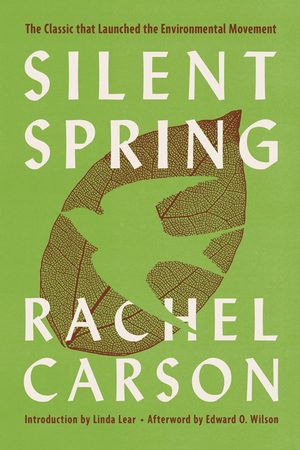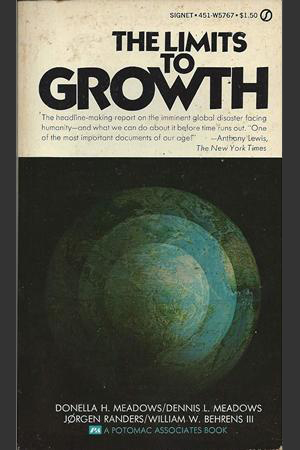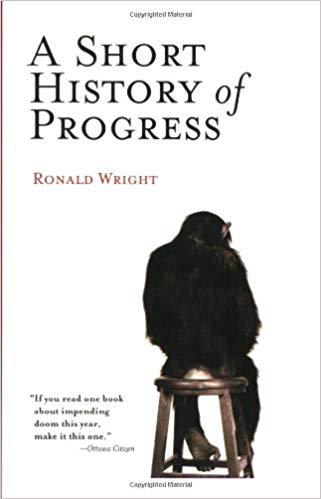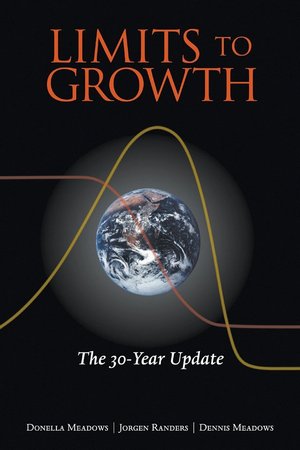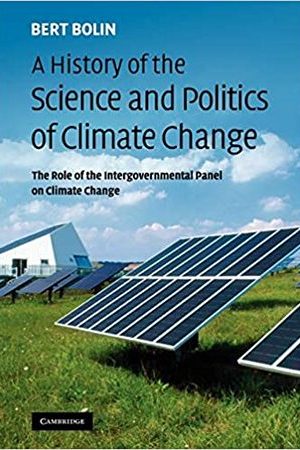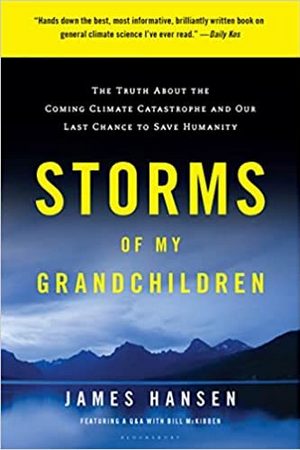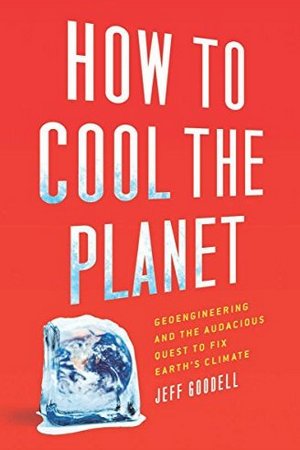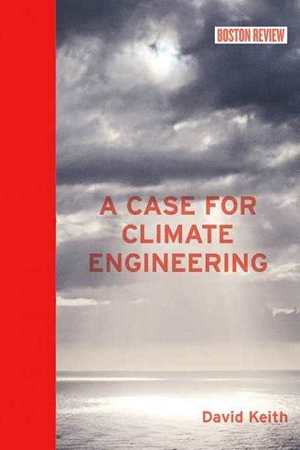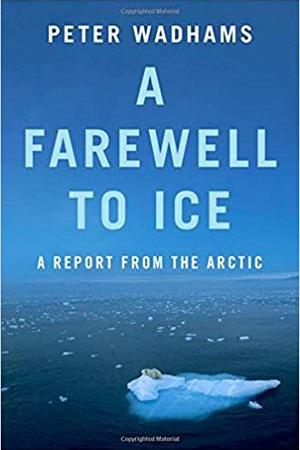Environmental Books
Silent Spring
by Rachel Carson (1962)
This remains one of the most eloquent and perceptive books ever written about the hazards of environmental pollution. Carson, a marine biologist turned science writer, describes the devastation caused by the careless use of pesticides and the rising levels of global radioactivity. She offers a balanced perspective on the use of chemicals in agriculture: "All this is not to say [that] there is no insect problem and no need to control. I am saying, rather, that control must be geared to realities ... and that the methods employed must be such that they do not destroy us along with the insects." (p. 19) She begins and ends her book by insisting that humankind must accommodate itself to nature rather than seeking to conquer it.
The Limits to Growth
by Donella H. Meadows, Jørgen Randers, Dennis L. Meadows, William W. Behrens III (1972)
If humankind survives the ecological crisis, future generations will look back on this book with the sad realization that our species was emphatically warned, at an early date, about the Earth's ecological constraints. The Limits to Growth used systems analysis and rudimentary computer models to show that, "If present growth trends in world population, industrialization, pollution, food production, and resource depletion continue unchanged, the limits to growth on this planet will be reached sometime within the next one hundred years. The most probable result will be a rather sudden and uncontrollable decline in both population and industrial capacity." (p. 29)
This stunningly prescient book was viciously attacked both for questioning growth and for "predicting" resource exhaustion and environmental collapse. However, the latter claim was a blatant lie - an early instance of the numerous falsehoods that now debase environmental discussions. The authors repeatedly stated that they were not making predictions, but only indicating, "... the general direction [that] our system, as it is currently structured, is taking us." (p. 50)
In 2014 Graham Turner, of the University of Melbourne, examined the trajectories cited in Limits to Growth. He concluded that the five factors - world population, industrialization, etc. - were all in line with its business-as-usual trajectory. In 2020 Dutch econometrician Gaya Herrington (née Branderhorst) repeated Turner's work using a recalibrated model, and found essentially the same thing.
Sadly, the Club of Rome today follows the mainstream in touting emissions reductions and ignoring solar radiation management to minimize collapse. In two recent books, Limits and Beyond (2022) and Earth for All (2022), SRM is not mentioned even once.
Ecotopia
by Ernest Callenbach (1975)
It is 20 years since Ecotopia - the territory occupied by Washington state, Oregon, and northern California - seceded from the United States because of the environmental crisis. An American newspaper, the Times-Post, sends star reporter Willian Weston to the secretive new country on a fact-finding mission and to mend some diplomatic fences. Callenbach perceptively describes Ecotopian society through Weston's reports.
Among Weston's findings are that the internal combustion engine has been banned, bicycles are everywhere, the economy has been radically decentralized, numerous environmentally-destructive outputs are no longer produced, the work-week has been reduced to 20 hours, and the people are highly emotional, sexual, and convivial. However, some still smoke, and dangerous war games are played in order to neutralize, "the physical competitiveness that seemed to be inherent in [humankind's] biological programming." (p. 80)
This is easily the most insightful account of a sustainable society I have ever read. The author understands both the ecological constraints that must be respected and the intractable aspects of human nature that must be tolerated and sublimated. Those who find this book useful should also consider reading its prequel, Ecotopia Emerging (1981).
Humanity's Descent: The Consequences of Ecological Instability
by Rick Potts (1996)
Anthropology's standard account of humankind's early development is the Savannah hypothesis. This states that, as forests shrank in Africa several million years ago, our species emerged from the trees and adjusted to life in a relatively stable savannah environment by adopting bipedalism, tool-making, speech, complex social life, etc. Potts, a paleoanthropologist at the Smithsonian, has concluded that this account is inaccurate and misleading.
Potts instead asserts that humankind's core attributes arose from environmental instability: the climatic and other alterations that produced a flexible, general-purpose brain capable of modifying its habitats to increase its survival chances.
This conclusion is highly significant for two reasons. First, it helps explain why our species became globally dominant and is now globally destructive. Although we are part of nature like other species, our unique evolutionary path means that we dangerously amplify natural shifts. Second, it counters the standard story that humankind can respond to palpable and immediate threats like the proverbial "tiger in the bush", but not to subtle and long-term threats like the ecological crisis. In fact, our evolved brain is fully capable of a rational crisis response, and the denial of this capacity is one of the great lies told by social leaders to avert fundamental change.
For an introduction to Potts' thesis about human evolution, see this video. For excellent video descriptions of the Milankovitch cycles, which drive the Earth's changing climates, see here and here.
The Discovery of Global Warming
by Spencer R. Weart (2003)
Weart's book is useful not only for its historical perspective on global warming, but also because it provides three crucial insights. First, scientists have long known that the climate system, particularly the polar regions, are highly sensitive to small perturbations that can trigger massive changes. Second, anything to do with climate disruption was suppressed and distorted when conservative forces began their ascent in the 1970s. Third, the IPCC was established not to solve the climate problem, but to snatch control of the issue from the independent scientists who were frantically raising the alarm. His statement on this topic is worth quoting in full:
"Conservatives and skeptics in the U.S. administration might have been expected to oppose the creation of a prestigious body to study climate change. But they distrusted still more the system of international panels of independent scientists that had been driving the issue. If the process continued in the same fashion, the skeptics warned, future groups might make radical environmental pronouncements. Better to form a new system under the control of government representatives. Besides, a complex and lengthy study process would restrain any move to take concrete steps to limit emissions.” (p. 152, emphasis added)
A Short History of Progress
by Ronald Wright (2004)
In this brief but perceptive book the author asserts that material progress is a trap that invites our species to over-expand, foul our environmental nests, and trigger an ecological crisis. His most striking example is the Mayan civilization that dominated Central America until about 800 AD, when it overshot its local resources and collapsed. Wright's summary statement applies with devastating accuracy to our current situation:
"As the crisis gathered, the response of the rulers was not to seek a new course, to cut back on royal and military expenditures, to put effort into land reclamation through terracing, or to encourage birth control ... No, they dug in their heels and carried on doing what they had always done, only more so. Their solution was higher pyramids, more power to the kings, harder work for the masses, [and] more foreign wars. In modern terms, the Maya elite became extremists, or ultra-conservatives, squeezing the last drops of profit from nature and humanity." (p. 102, emphasis added)
Limits to Growth: The 30-Year Update
by Donella H. Meadows, Jørgen Randers, Dennis L. Meadows (2004)
The first update to The Limits to Growth (1972) was Beyond the Limits (1992), which noted that humankind had already overshot the Earth's ecological capacity. This second update states that humankind failed to achieve the environmental goals established at the UN conference in Rio de Janeiro in 1992. "Consequently, we are much more pessimistic about the global future than we were in 1972. It is a sad fact that humanity has largely squandered the past 30 years in futile debates … We don't have another 30 years to dither. Much will have to change if the ongoing overshoot is not to be followed by collapse during the twenty-first century." (p. xvi)
A History of the Science and Politics of Climate Change: The Role of the Intergovernmental Panel on Climate Change
by Bert Bolin (2008)
Bolin was the IPCC's first chair and held this post for almost a decade. In this book he recounts the organization's history and the opposition it encountered. Despite his vaunted reputation, Bolin was a central figure in establishing the IPCC's core falsehood: the solution to the GHG crisis is to bend the emissions curve to zero rather than the concentrations curve to a safe level.
Storms of My Grandchildren: The Truth About the Coming Climate Catastrophe and Our Last Chance to Save Humanity
by James Hansen (2009)
Hansen provides a solid scientific explanation of the GHG crisis, but his naivety on other issues is extreme. He reduces political power to special interests and money, seeks "healthy economic growth", and claims that the solutions are enlightened government policies and political will.
None of this is tenable. The crucial lesson is this: even the best climate scientists are economically and politically mystified, and cannot be trusted beyond their scientific competencies.
Green Illusions: The Dirty Secrets of Clean Energy and the Future of Environmentalism
by Ozzie Zehner (2012)
The first half of this book is an excellent critique of "green" energy. The second half, which discusses the future of environmentalism, is far weaker. For a synopsis of Zehner's views on "green" energy, see the documentary film, Planet of the Humans.
How to Cool the Planet: Geoengineering and the Audacious Quest to Fix Earth's Climate
by Jeff Goodell (2012)
Goodell provides a solid overview of geoengineering, which is defined in a Royal Society report as, "… deliberate large-scale intervention in the Earth's climate system, in order to moderate global warming." Geoengineering comprises two broad approaches: greenhouse gas removal (GGR) to extract unsafe GHGs from the atmosphere, and solar radiation management (SRM) to increase the Earth's reflectivity (albedo). The author identifies a major reason why capitalists and social leaders prefer GGR over SRM: "… you can make money doing it. There is no market for shade, or for reducing the watts per square meter of sunlight hitting the earth. There is, however, a market for carbon - and it’s huge." (p. 140).
A Case for Climate Engineering
by David Keith (2013)
This book, by a Canadian physicist who is now at Harvard University, addresses the critical topic of solar radiation management (SRM) - the original term for climate engineering. Keith is right on many issues: SRM could halt or even reverse the polar meltdowns, there are no effective alternatives for reducing climate risks, and the world's efforts to reduce emissions have been, "... a phony war of bold exhortation and symbolic action." (p. 35) His extraordinary blind spot is the short-term gravity of the GHG crisis. He refuses to acknowledge that runaway global warming is an imminent threat and therefore insists that, "... no sensible person advocates immediate commitment to large-scale geoengineering." (p. 147) In my view this is a critical error.
A Farewell to Ice: A Report from the Arctic
by Peter Wadhams (2017)
Wadhams is an Arctic expert at the University of Cambridge. This book summarizes his scientific observations after numerous field trips over many decades. With the possible exceptions of Russia's Natalia Shakova, Wadhams is the world's leading authority on Arctic ice. His conclusions are therefore highly significant:
- All known Arctic feedbacks are positive. There appear to be no natural processes to stop the slide of summer ice to "oblivion" (p. 84).
- The most serious feedback is decreased albedo (reflectivity) as white ice is replaced by dark water. This decrease has the same warming effect as several decades of CO2 emissions. (p. 4)
- A tipping point was reached in 2005, when summer ice disappeared over Siberian ice shelves. This allowed the water temperature to rise above 0°C, raising the possibility of massive methane releases from seabed hydrates. (p. 121)
- In Wadhams' youth, observational data was "automatically accepted as valid". Today the situation is disturbingly different: "If a forecast based on observations gives a result which appears alarming to scientists who look mainly at models, then some scientists seem to ignore it, and may replace it with predictions made by a computer model which may have already failed." (p. 87) He refers to this as "mental self-censorship". (p. 155) In Orwell's Nineteen Eighty-Four it is called "crimestop" because it prevents dangerous thought crimes.
- Reducing emissions is not sufficient: "... even if a drastic and immediate effort is made to cut emissions, significant geoengineering and CO2 removal operations will need to begin around 2020, with up to 20 gigatons of CO2 extracted each year by 2100 to keep the global temperature increase below 2 ° C." (p. 188)
- The IPCC has behaved in a deceptive and irresponsible manner with respect to Arctic ice disappearance and the possibility of calamitous methane releases.
Also see this video of an interview with Wadhams.
